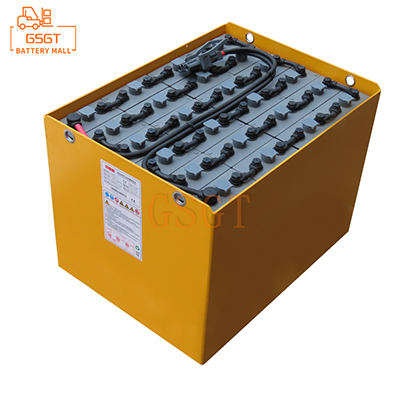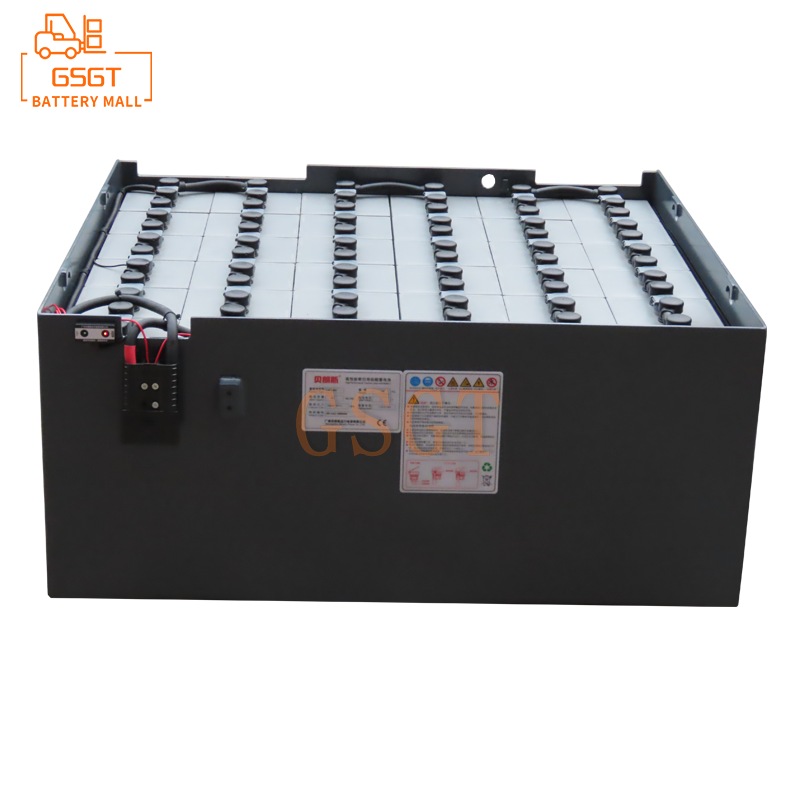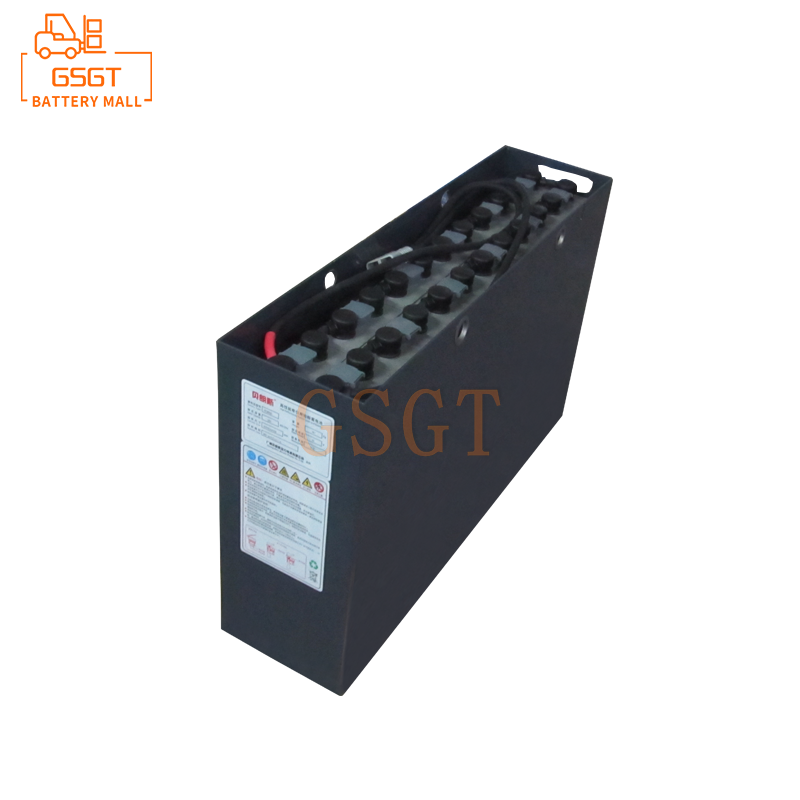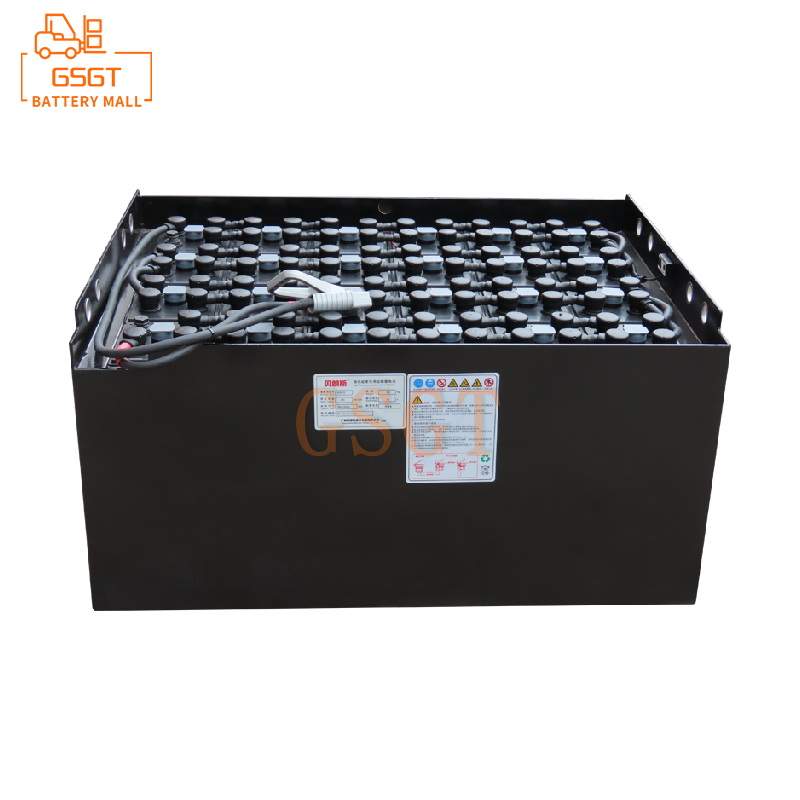Time:2025-05-09 11:23:44
Browse:664
Introduction
In industries such as logistics and warehousing, forklifts, as important handling equipment, have drawn much attention to the performance and lifespan of their power source - lead-acid batteries. Lead-acid batteries are widely used in the forklift field due to their advantages such as low cost, high safety and mature technology. However, the relatively short cycle life of the forklift not only increases the usage cost but also affects the efficiency and continuity of operation of the forklift. Therefore, enhancing the cycle life of lead-acid batteries in forklifts has significant practical significance.
The working principle of lead-acid batteries
Lead-acid batteries achieve the charging and discharging processes through a series of complex electrochemical reactions. Its basic structure includes positive plates, negative plates, separators, electrolyte and casing, etc. Electrons flow from the negative terminal to the positive terminal through the external circuit, thereby providing electrical energy for the forklift.
The charging process is the reverse reaction of the discharging process. Under the action of an external power supply, lead sulfate is respectively reduced to lead dioxide and spongy lead on the positive and negative plates, and the concentration of sulfuric acid gradually recovers. Through such a cyclic reaction, lead-acid batteries achieve the mutual conversion of electrical energy and chemical energy.
Factors affecting the cycle life of lead-acid batteries in forklifts
Plate materials and manufacturing processes
The plates are the core components of lead-acid batteries, and their materials and manufacturing processes have a significant impact on the cycle life. The traditional plate manufacturing process has certain defects in terms of the adhesion and uniformity of active substances, which can easily lead to the premature shedding of active substances during charging and discharging, shortening the battery life. For instance, during long-term charge and discharge cycles, the active material of the positive plate, lead dioxide, will gradually become loose in structure, resulting in a decrease in the bonding force between the active material and the plate, and eventually fall off. In addition, the purity and quality of the plate materials will also affect the performance of the battery. If the plates contain impurities, it may cause local corrosion and accelerate the damage of the plates.
Electrolyte concentration and purity
The electrolyte plays a key role in the electrochemical reaction of lead-acid batteries. The concentration of the electrolyte has a significant impact on the capacity, internal resistance and cycle life of the battery. When the concentration of the electrolyte is too high, it will accelerate the corrosion of the plates and shorten the battery life. If the concentration is too low, it will lead to a decrease in battery capacity. Meanwhile, the purity of the electrolyte is also of vital importance. If the electrolyte contains impurities such as iron, copper and other metal ions, these impurities will undergo chemical reactions inside the battery, causing self-discharge and reducing the actual capacity and cycle life of the battery.
Charging and discharging mode
Unreasonable charging and discharging methods are one of the important factors leading to the shortened cycle life of lead-acid batteries in forklifts. Excessive discharge will cause the lead sulfate crystals on the plates to coarse, forming irreversible sulfation, blocking the plate pores, hindering the penetration and diffusion of the electrolyte, and thereby reducing the battery's capacity and charging and discharging efficiency. For instance, when a forklift frequently drains its battery power during use and fails to charge it in time, this situation is prone to occur. On the other hand, overcharging will cause a large amount of gas to be generated inside the battery, resulting in the loss of water in the electrolyte and the shedding of active substances on the plates, which will also shorten the battery's lifespan. In addition, excessive or insufficient charging current can also have adverse effects on the battery. Excessive charging current will cause the battery to heat up severely and accelerate the aging of the plates. If the charging current is too small, it will lead to an excessively long charging time, affecting the efficiency of the forklift.
Working environment temperature
Lead-acid batteries are relatively sensitive to the temperature of the working environment. When the temperature is too high, the chemical reaction rate inside the battery increases, the evaporation and decomposition of the electrolyte intensify, resulting in water loss of the electrolyte and accelerated corrosion of the plates, thereby shortening the battery's lifespan. Studies show that when the ambient temperature exceeds 40℃, the battery life will decline significantly. On the contrary, in a low-temperature environment, the viscosity of the electrolyte increases, the ion diffusion rate slows down, the internal resistance of the battery increases, and the charge and discharge efficiency decreases, which also affects the cycle life of the battery.
Methods to extend the cycle life of lead-acid batteries in forklifts
Optimize the plate materials and manufacturing processes
Adopt new plate materials: Develop and apply new plate materials, such as adding special additives to the positive plate to enhance the stability and structural strength of lead dioxide and reduce the shedding of active substances. For instance, adding an appropriate amount of metal oxides such as cobalt and nickel can improve the crystal structure of lead dioxide, enhance its electrical conductivity and corrosion resistance, and thereby extend the service life of the positive plate. In terms of the negative plate, materials such as high-purity lead-calcium alloy can be adopted to increase the hydrogen evolution overpotential of the negative plate, reduce the release of hydrogen, and lower the corrosion rate of the negative plate.
Improve manufacturing process: Optimize the manufacturing process of the plates to enhance the adhesion between the active substances and the plates. Advanced paste coating technology is adopted to ensure that the active substances are evenly coated on the plates, and through reasonable curing and formation processes, the active substances form a tight bond with the plates. For instance, by adopting a high-temperature curing process, the lead paste and lead core in the plates can be better combined, enhancing the mechanical strength and stability of the plates. Meanwhile, during the manufacturing process, the production environment is strictly controlled to reduce the introduction of impurities and ensure the purity and quality of the plate material.
Precisely control the electrolyte
Reasonably adjust the concentration of the electrolyte: According to the usage environment and working conditions of the forklift, precisely adjust the concentration of the electrolyte. In a high-temperature environment, appropriately reduce the concentration of the electrolyte to decrease the corrosion of the plates. In a low-temperature environment, the concentration of the electrolyte should be appropriately increased to enhance the charging and discharging performance of the battery.
Ensure the purity of the electrolyte: Prepare the electrolyte with high-purity sulfuric acid and deionized water, and prevent impurities from entering during use. The electrolyte can be filtered regularly by installing a filtering device to remove possible impurities such as metal ions in it. In addition, keep the interior of the battery clean to prevent foreign objects from falling into the electrolyte, thereby reducing the occurrence of self-discharge and extending the battery's lifespan.
Improve the charging and discharging strategy
Adopt intelligent charging technology: By using an intelligent charger, the charging current and voltage are automatically adjusted according to the real-time status of the battery. The smart charger can determine the charging status of the battery by detecting parameters such as the terminal voltage, charging current, and electrolyte temperature of the battery, and adopt appropriate charging algorithms to achieve intelligent switching between different stages such as constant current charging, constant voltage charging, and trickle charging.
Avoid excessive discharge: During the operation of forklifts, install a battery power monitoring device to monitor the remaining battery power in real time. When the battery power drops to a certain level (such as 30% - 40%), stop using it in time and charge it to prevent excessive battery discharge. Meanwhile, the control system of the forklift is optimized, and a reasonable under-voltage protection value is set. When the battery voltage drops below the protection value, the power supply is automatically cut off to prevent irreversible damage caused by excessive battery discharge.
Control charging time and current: According to the battery capacity and actual usage conditions, reasonably control the charging time and current. Avoid overcharging for a long time. Generally, when the charger shows that the battery is fully charged, continue charging for 1 to 2 hours. At the same time, select an appropriate charging current, which is generally 10% to 20% of the battery capacity.
Improve the working environment
Temperature control: Create a suitable working temperature environment for forklift lead-acid batteries. In high-temperature environments, air conditioners or ventilation and heat dissipation devices can be installed to lower the temperature around the battery, reducing the evaporation of the electrolyte and the corrosion of the plates. For instance, in indoor environments such as warehouses, keep the ambient temperature between 25 and 35 degrees Celsius. In low-temperature environments, insulation measures should be taken, such as installing insulation covers on the battery or preheating the battery before charging to increase its temperature and improve its charging and discharging performance.
Humidity and ventilation management: Keep the battery working environment dry and well-ventilated. A humid environment can easily cause the battery casing and plates to rust and corrode, affecting the battery's performance and lifespan. By installing dehumidification equipment, the environmental humidity can be controlled within an appropriate range (generally 40% - 60%). At the same time, ensure that the area where the battery is located has good ventilation, and promptly expel gases such as hydrogen produced during the charging process to prevent gas accumulation and safety accidents. Moreover, good ventilation helps to lower the battery's temperature and extend its service life.
Conclusion
Improving the cycle life of lead-acid batteries in forklifts is a comprehensive project that requires efforts from multiple aspects such as plate materials and manufacturing processes, electrolyte control, charging and discharging strategies, and working environments. By adopting new plate materials and improving the manufacturing process, the performance and stability of the plates can be enhanced. Precise control of the concentration and purity of the electrolyte can reduce the side reactions inside the battery. Optimizing the charging and discharging strategies and avoiding excessive discharging and charging can effectively extend the service life of the battery. Improve the working environment, control temperature and humidity, and provide good operating conditions for the battery. The comprehensive application of these methods can not only significantly extend the cycle life of lead-acid batteries in forklifts, reduce usage costs, but also enhance the working efficiency and reliability of forklifts, providing a strong guarantee for the efficient operation of industries such as logistics and warehousing. In the future development, with the continuous advancement of technology, it is believed that more innovative methods and technologies will be applied to enhance the cycle life of forklift lead-acid batteries, promoting the sustainable development of the industry.

$3405

$4045

$1060

$5030

MESSAGE
Professional And Efficient
Security
Affordable Price
Professional Services